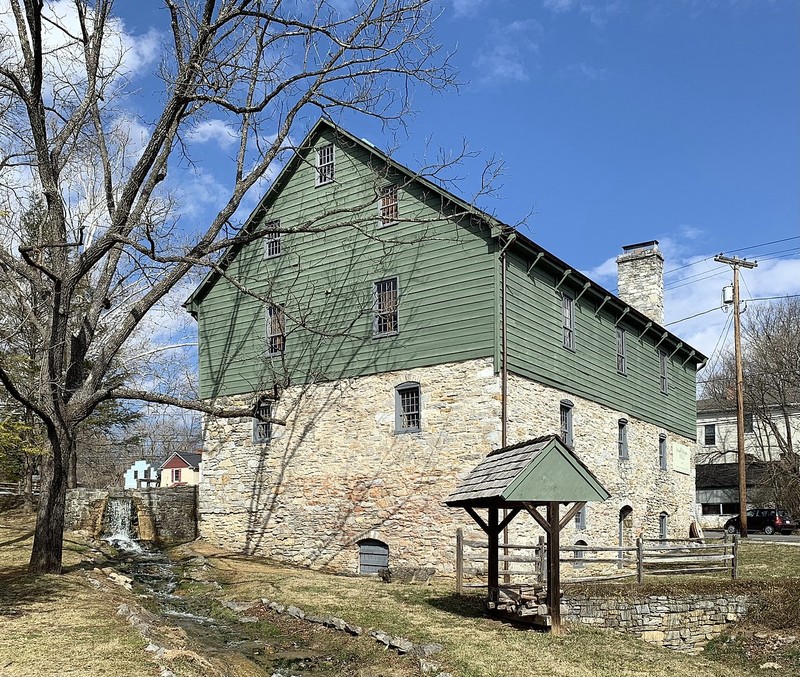Burwell-Morgan Mill
Introduction
Text-to-speech Audio
The Burwell-Morgan Mill is one of the oldest operating grist mills in the United States. Wealthy plantation owner and politician Nathaniel Burwell (1750-1814) and Revolutionary War hero Daniel Morgan (c.1735-1802) built this mill by 1785 after recognizing the potential profits that this location could generate given the rising price of wheat, the growth of the area, and the flow of the stream. The mill is located on what used to be Burwell's a 5,000-acre plantation and is near the Carter Hall mansion, which Burwell erected in the 1790s. Today the mill, which is owned by the Clarke County Historical Society, grinds a variety of grains and sells ground flour, corn meal, and grits. Many of the grains are sourced from local farms. The mill is also the site of a leading annual art show held in October. In 1969, the mill was added to the National Register of Historic Places.
Images
Built in the early 1780s, the Burwell-Morgan Mill is one of the oldest operating gristmills in the country.

Backstory and Context
Text-to-speech Audio
Nathaniel Burwell was born into a wealthy landowning family and inherited 5,000 acres in 1771. As an adult, he earned a reputation for being a good businessman and gained the respect of leading figures of the day including Thomas Jefferson. After seeing the rise in the price of wheat towards the end of the Revolutionary War, Burwell believed the value of wheat would continue to increase. As a result, he decided to establish the mill and partnered with Morgan, who was also an intelligent businessman and oversaw its construction. Additionally, as a successful wagon driver, he also was knowledgeable of how to transport goods on local roads and paths. His reputation was so strong that his request that a major road be moved so that it passed next to the mill was granted.
The mill was very successful and helped establish Millwood as a thriving commercial hub. The processed grains were shipped on wagons to the Shenandoah River where they were sent to port cities. At the mill's height, it produced over 60,000 bushels of wheat each year. Enslaved people operated the mill seven days a week, 24 hours a day. The mill prompted the establishment of other businesses in Millwood including wagon builders, barrel makers, a tannery, and a blacksmith shop (it appears Burwell and Morgan operated some of these). Churches and two general stores were also built.
The mill operated until 1953. Demand for its products was high for the rest of the 19th century and well into the 20th century. It began to the decline during World War II when demand for milled wheat and corn from other countries dropped significantly. This forced local farmers to switch to growing apples and livestock. The mill fell into disrepair and was abandoned until 1964 when the Clarke County Historical Society bought it. The Society restored the mill over the next several years and then opened it as the Mill Museum in 1972. It was restored again in the late 1990s.
Sources
"Mill History." Clarke County Historical Society. Accessed June 19, 2023. https://www.clarkehistory.org/mill-history.html.
Virginia Historic Landmarks Commission Staff. "Millwood Mill." National Park Service - National Register of Historic Places Nomination Form. November 12, 1969. https://catalog.archives.gov/id/41680242.
Wikimedia Commons: https://commons.wikimedia.org/wiki/File:Burwell-Morgan_Mill_-_4.jpg
